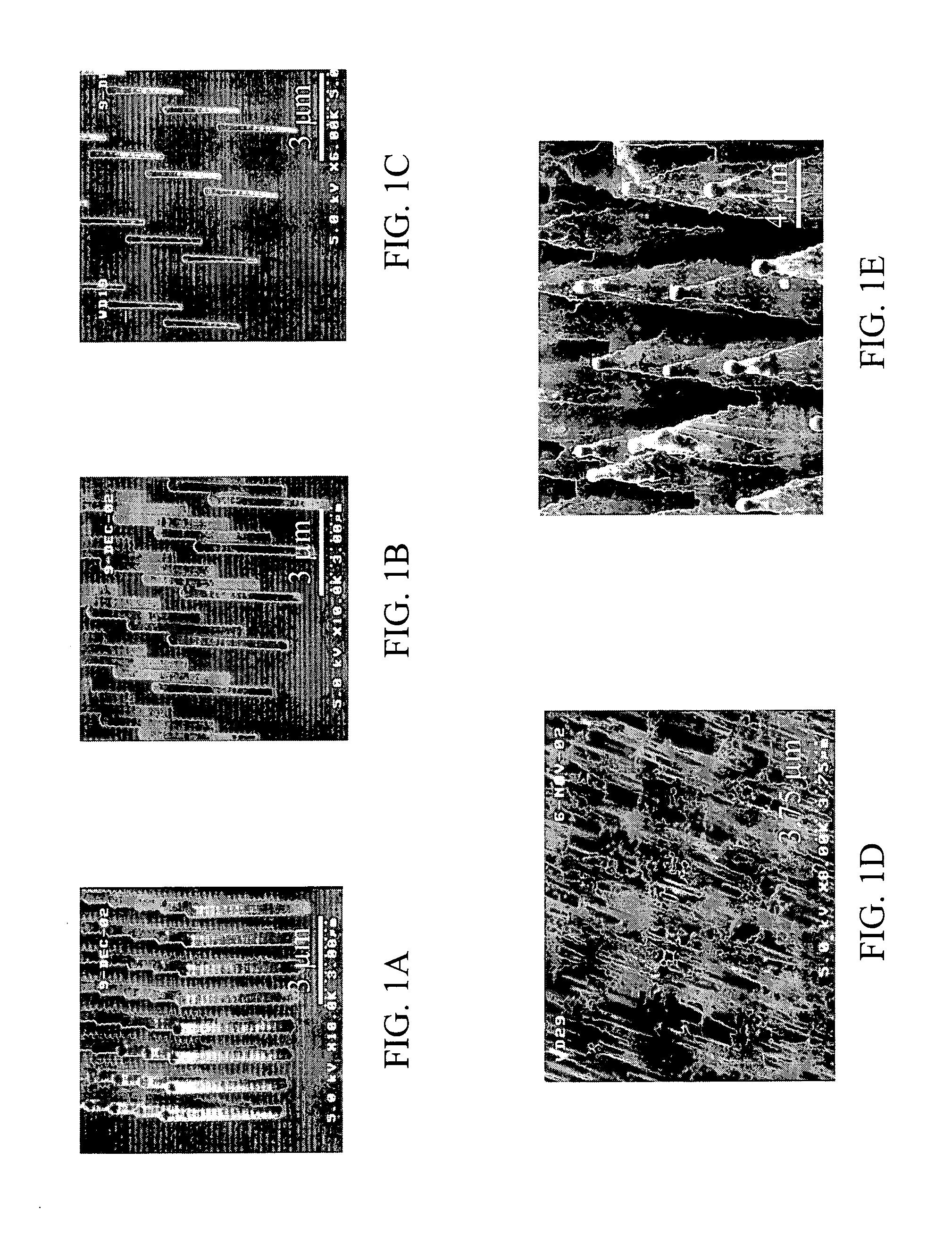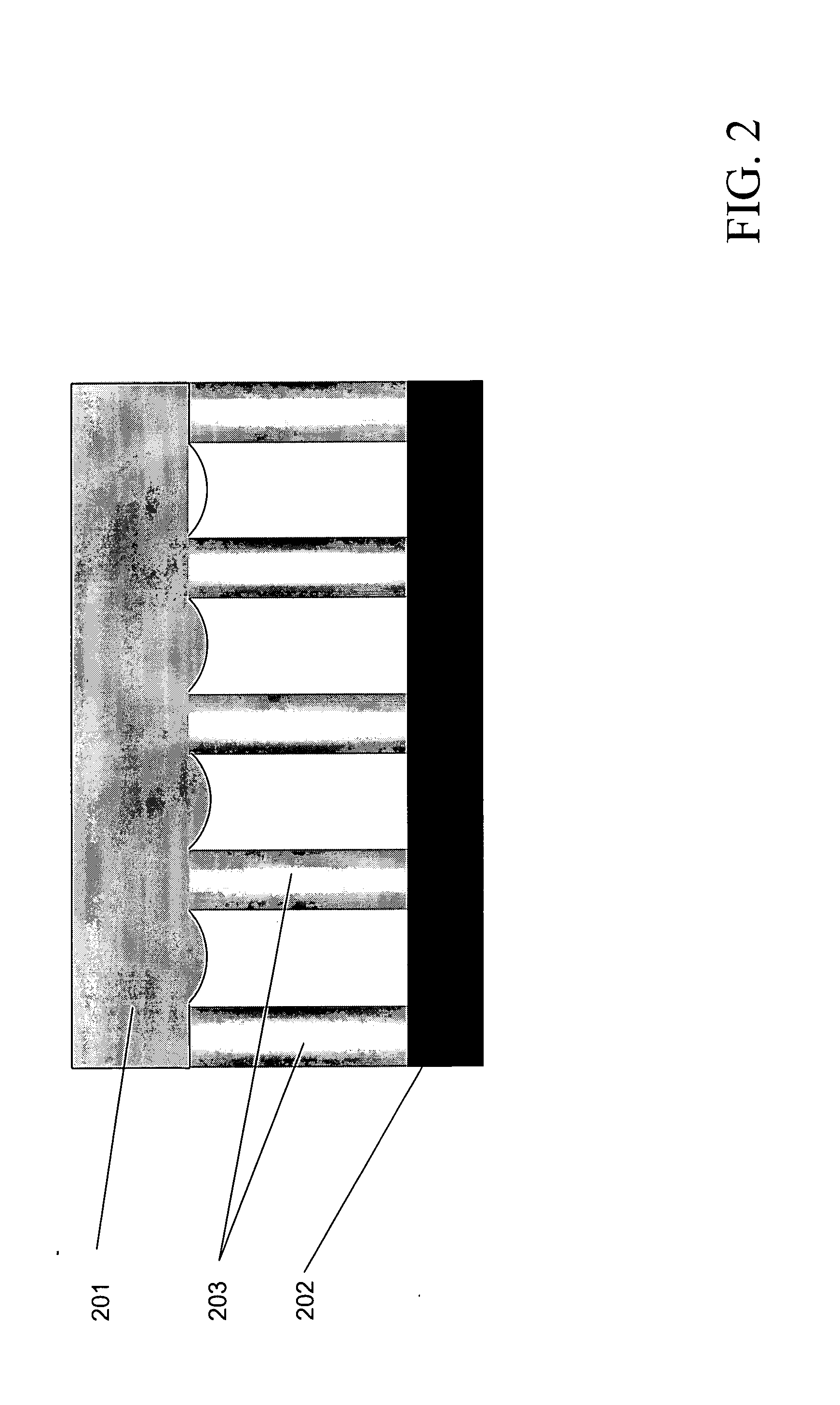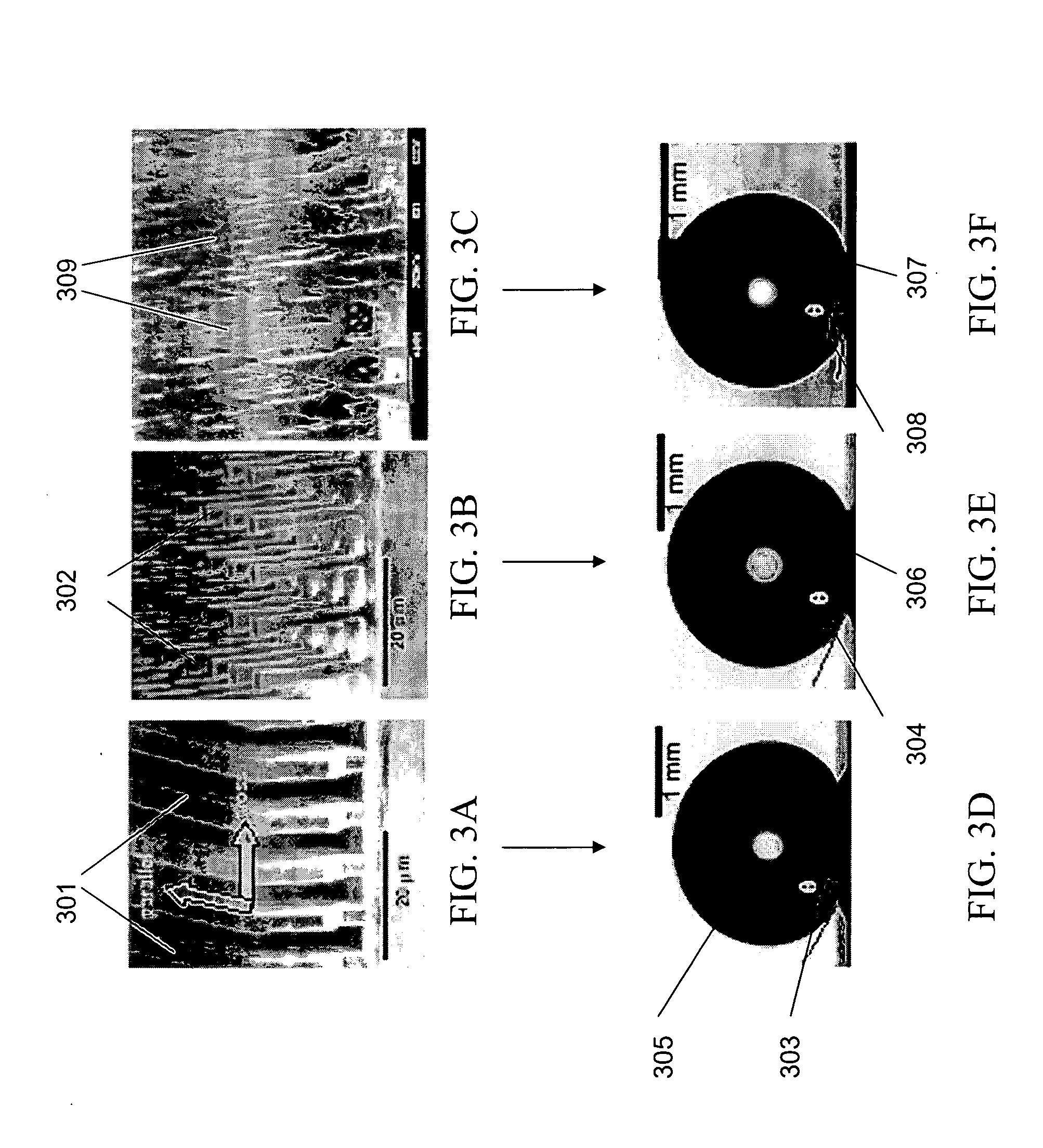Dynamically controllable biological/chemical detectors having nanostructured surfaces
a biological/chemical detector and nanostructure technology, applied in the field of biological/chemical detectors, can solve the problems of increasing the number of manual steps, and and achieve the effect of reducing the surface tension of the dropl
- Summary
- Abstract
- Description
- Claims
- Application Information
AI Technical Summary
Benefits of technology
Problems solved by technology
Method used
Image
Examples
Embodiment Construction
[0034] In the microfluidic chemical and biological detectors described above, reagent liquids are typically disposed in microchannels that are, illustratively, superhydrophobic, i.e., the surface of the microchannel is resistant to penetration by the liquids. FIGS. 1A-1E show different illustrative superhydrophobic surfaces produced using various methods. Specifically, these figures show surfaces having small posts, known as nanoposts and / or microposts with various diameters and with different degrees of regularity. An illustrative method of producing nanoposts and microposts, found in U.S. Pat. No. 6,185,961, titled “Nanopost arrays and process for making same,” issued Feb. 13, 2001 to Tonucci, et al, is hereby incorporated by reference herein in its entirety. Nanoposts have been manufactured by various methods, such as by using a template to form the posts, by various means of lithography, and by various methods of etching.
[0035] When a droplet of liquid, such as water, is placed...
PUM
| Property | Measurement | Unit |
|---|---|---|
| Density | aaaaa | aaaaa |
| Electric potential / voltage | aaaaa | aaaaa |
| Biological properties | aaaaa | aaaaa |
Abstract
Description
Claims
Application Information
 Login to View More
Login to View More - R&D
- Intellectual Property
- Life Sciences
- Materials
- Tech Scout
- Unparalleled Data Quality
- Higher Quality Content
- 60% Fewer Hallucinations
Browse by: Latest US Patents, China's latest patents, Technical Efficacy Thesaurus, Application Domain, Technology Topic, Popular Technical Reports.
© 2025 PatSnap. All rights reserved.Legal|Privacy policy|Modern Slavery Act Transparency Statement|Sitemap|About US| Contact US: help@patsnap.com



